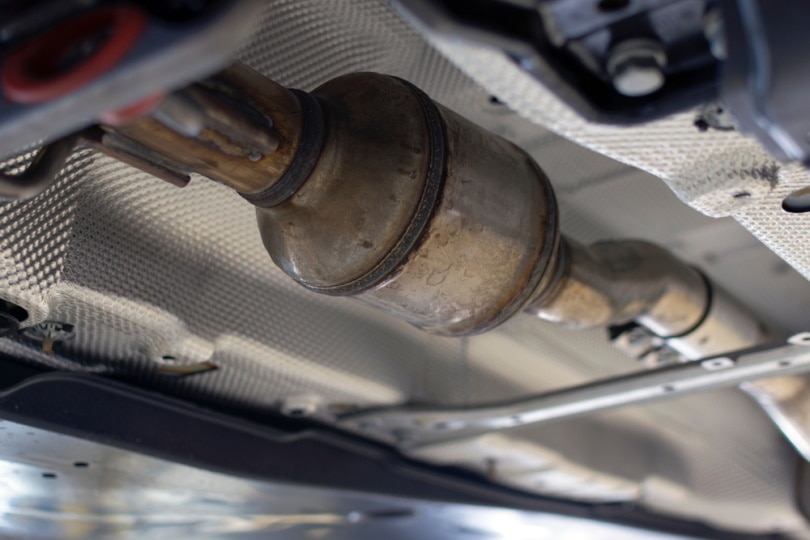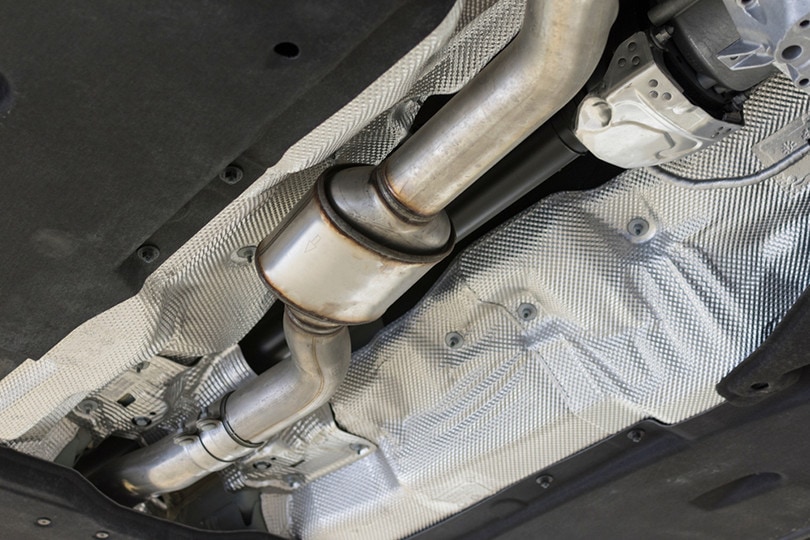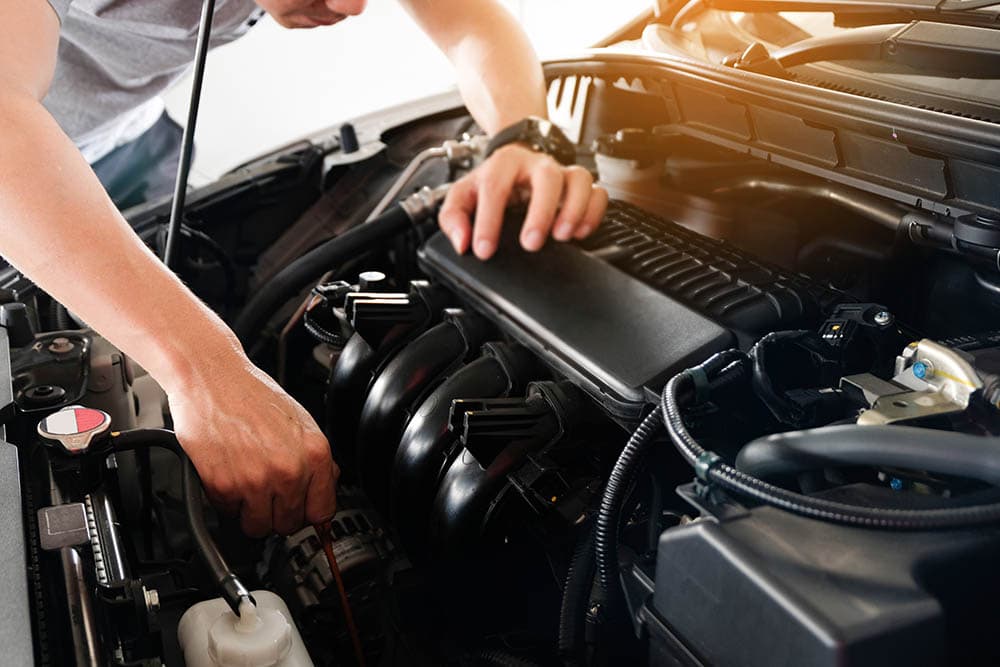Can You Drive Without a Catalytic Converter? Facts & FAQs
-

- Last updated:

Catalytic converters are part of a vehicle’s exhaust system, and their sole purpose is to convert harmful and toxic pollutants into less harmful ones. Catalytic converters, however, weren’t always present in motor vehicles, and they didn’t come into existence until the 1970s.
Now, every modern vehicle is equipped with a catalytic converter, and they are responsible for keeping our environment safe by reducing the number of toxic gasses emitted from motor vehicles. But, is it safe to drive a car without a catalytic converter now? Yes, you can drive a vehicle without a catalytic converter. Continue reading to learn more.
So, Can You Drive a Car Without a Catalytic Converter?
Yes, you can actually drive a vehicle without its catalytic converter. But should you, no. In fact, if you have discovered that your catalytic converter is faulty or if it’s stolen, and you aren’t able to get it to the repair shop as quickly as you like, you may want to make plans to drive another vehicle or get a ride to your destination. However, if you’re still planning to drive a vehicle without a catalytic converter, you should be aware of the risk that you are taking when doing so.

What Are The Risks of Driving Without A Catalytic Converter?
Driving your vehicle without a catalytic converter can put you at risk for state and local motor vehicle fines and it may negatively affect your vehicle’s performance. There are some cases when car owners will remove the catalytic converter themselves when it becomes faulty.
This is known as disabling your ignition system, and it carries a serious offense in every state–even states that don’t require emissions tests (there are currently 34 of them that do). Here are a few risks you take when driving around without a catalytic converter.
Check Engine Light And Various Error Codes
If your catalytic converter is removed, the first thing you will notice is the illumination of the “Check Engine” light and various error codes, depending on the make and model of your vehicle. The catalytic converter is an integral part of your vehicle’s exhaust and is connected to various sensors to alert you when fumes are not being filtered correctly.
They convert dangerous gasses such as nitrogen oxide and carbon monoxide to carbon dioxide, water vapor, and nitrogen. Once the converter is removed, the sensors will pick up on the lack of filtration, triggering the sensor lights to illuminate. Yes, you can get a mechanic to turn off the sensors, but this means that you won’t be alerted to other potential issues with your vehicle moving forward.

Your Car’s Muffler Will Be Louder
Another thing that the catalytic converter is responsible for is muffling sounds coming from your vehicle’s exhaust. Without the converter, any noise coming from the exhaust system will suddenly become much louder and more prevalent. This means that your once small and quiet sedan may suddenly sound like a Harley-Davidson driving down the street–something that may drive your neighbors crazy.
- Related Read: Can You Drive Without a Muffler?
Changes To Fuel Economy
Changes to your engine’s overall fuel economy are one of the biggest downsides to driving your vehicle without an operational catalytic converter. When a vehicle is missing the catalytic converter, an increase in carbon monoxide and various hydrocarbons can reduce the vehicle’s overall fuel economy.
Ultimately, you may find that the vehicle uses more fuel than it did previously. And if you have a luxury vehicle or one that requires premium fuel, this can result in a substantial price change at the pump.

Negative Environmental Effects & Legal Issues
The main purpose of a catalytic converter is to prevent harmful emissions in the atmosphere, such as carbon monoxide, which can cause severe health issues and even death. In the mid-70s the Environmental Protection Agency’s regulation of exhaust emissions required all vehicles to be equipped with catalytic converters.
This means that under federal law, you can’t replace your catalytic converter with a pipe or remove it. Doing so violates the Clean Air Act and your state government can fine you.
Conclusion
Although your car will function without a catalytic converter, driving around without one is not recommended. Not only can it affect your vehicle’s performance, but it’s illegal in all states and can result in you being fined.
It also harms the environment, as your vehicle will no longer be able to filter out the harmful fumes created while your vehicle is in operation. So, if your catalytic converter is stolen or falls off, it’s best to take it to a repair shop for replacement as soon as possible.
- https://www.walkerexhaust.com/support/exhaust-101/how-does-a-catalytic-converter-work.html
- https://www.sciencedirect.com/topics/earth-and-planetary-sciences/catalytic-converter
- https://www.epa.gov/clean-air-act-overview/clean-air-act-text
- https://www.mysynchrony.com/blog/automotive/what-is-a-catalytic-converter-and-why-do-we-need-it.html
- https://www.explainthatstuff.com/catalyticconverters.html
- https://www.way.com/blog/drive-car-without-catalytic-converter/
Featured Image Credit: Ulianenko Dmitrii, Shutterstock
Contents

